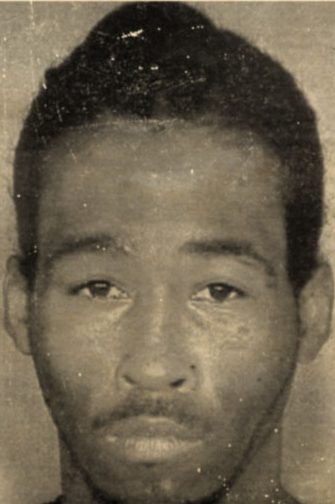In May 2001, authorities received a call reporting a shooting involving five individuals. Upon arrival at the crime scene, located in an apartment above the renowned Carnegie Deli in Manhattan, New York, they discovered two fatalities and three surviving victims, including the apartment owner, Jennifer Stahl. Despite efforts, Stahl tragically passed away shortly after being transported to the hospital. The investigation into Stahl’s death, along with the motive behind the crime, is chronicled in the Netflix series ‘Homicide: New York’ in an episode titled ‘Carnegie Deli Massacre.’
Jennifer Stahl was Shot in Her Apartment With Four Other People
Jennifer Stahl, aged 39, resided in a modest studio apartment situated directly above the bustling Carnegie Deli in Manhattan, New York. Alongside her pursuits as an aspiring actress and model, she had notably appeared in the popular 1987 film ‘Dirty Dancing’. However, her true passion lay in music, and she had transformed a room adjacent to her living quarters into a personal recording studio. Here, she fostered a creative environment, serving as a gathering place for artists to collaborate and cultivate meaningful works.

To supplement her income, Jennifer Stahl engaged in the sale of marijuana, catering to a small, exclusive clientele that included prominent figures in the theater and music industries. Her customers were carefully screened, and she prided herself on providing a higher quality product than what was typically available on the market. Welcoming numerous visitors to her apartment, she often enlisted the assistance of a trusted friend to oversee access and prioritized her safety and security.
On the evening of May 10, 2001, a group of individuals, including Anthony Veadrer, a hairdresser and close friend of Jennifer Stahl, Stephen King, who was assisting with managing the door, as well as Rosemond Dane and Dane’s fiancé, Charles “Trey” Helliwell, were gathered in Stahl’s apartment. While they were socializing, two masked assailants entered the apartment and forcibly took Stahl to the recording studio, where she was shot in the head. The intruders then bound the hands of the other individuals with duct tape and proceeded to shoot them before fleeing the scene.
Veader, one of the survivors of the attack, managed to call 911 after the intruders left, alerting the authorities to the violent incident. Upon arrival, the police discovered Trey and King deceased, while Stahl was found with her hands bound by duct tape, covered in blood. All three surviving victims, including Veader, were promptly transported to the hospital. Unfortunately, despite medical intervention, Stahl was pronounced dead shortly after arrival.
Jennifer Stahl’s Killers Were Caught in a CCTV Footage
Police investigation revealed surveillance footage capturing masked men entering Jennifer Stahl’s apartment, one of whom had dreadlocks. Witnesses at the Carnegie Deli reported seeing a red car near the apartment, with two men hastily getting into it and fleeing the scene. Additionally, one of Stahl’s friends informed the police about a recent altercation between Stahl and her boyfriend, who bore a resemblance to one of the individuals seen in the surveillance videos.

Police brought in Stahl’s boyfriend for questioning, but his alibi checked out, removing him from the list of suspects. This led investigators to consider the possibility of the crime being linked to a drug deal or a botched robbery. Anthony Veader, upon partial recovery, informed the police that he overheard someone mention the arrival of a person named Sean just moments before the attack. Subsequently, documents retrieved from Stahl’s apartment included a CV bearing the name Sean Salley, prompting further investigation into his potential involvement.
Upon investigating Salley, the police discovered his criminal record, which included prior charges related to robbery and firearms possession. Moreover, his picture matched one of the suspects who was seen in the surveillance footage. Following a lead to Salley’s residence in Newark, New Jersey, law enforcement showed a surveillance video to a young girl residing nearby, who identified the second individual in the footage as Andre Smith. Subsequently, when the police visited Smith’s residence, his wife informed them that he was not present. However, several days later, to the surprise of authorities, Smith voluntarily appeared at the precinct.
During the interrogation, Smith initially denied any involvement but eventually succumbed to pressure and confessed. He claimed that Salley had proposed the robbery scheme, suggesting they could steal marijuana and cash from Stahl’s apartment. He said that he needed money as he recently had a child and was struggling financially. According to Smith, Salley instructed him to restrain the occupants while he carried out the shootings. Smith asserted that he was taken aback by the violence and denied any direct participation in the shootings. Despite his confession, Salley remained elusive, and authorities intensified their search for him.
Following an extensive two-month search, law enforcement sought the assistance of “America’s Most Wanted,” broadcasting Salley’s image nationwide. Shortly after the episode aired, a tip from Miami led police to a homeless shelter where Salley was residing. Despite a brief chase, authorities successfully apprehended him. Subsequent DNA analysis linked Salley to genetic material recovered from the duct tape used to bind one of the victims. Both Salley and Smith were subsequently convicted of the murders.


You must be logged in to post a comment.